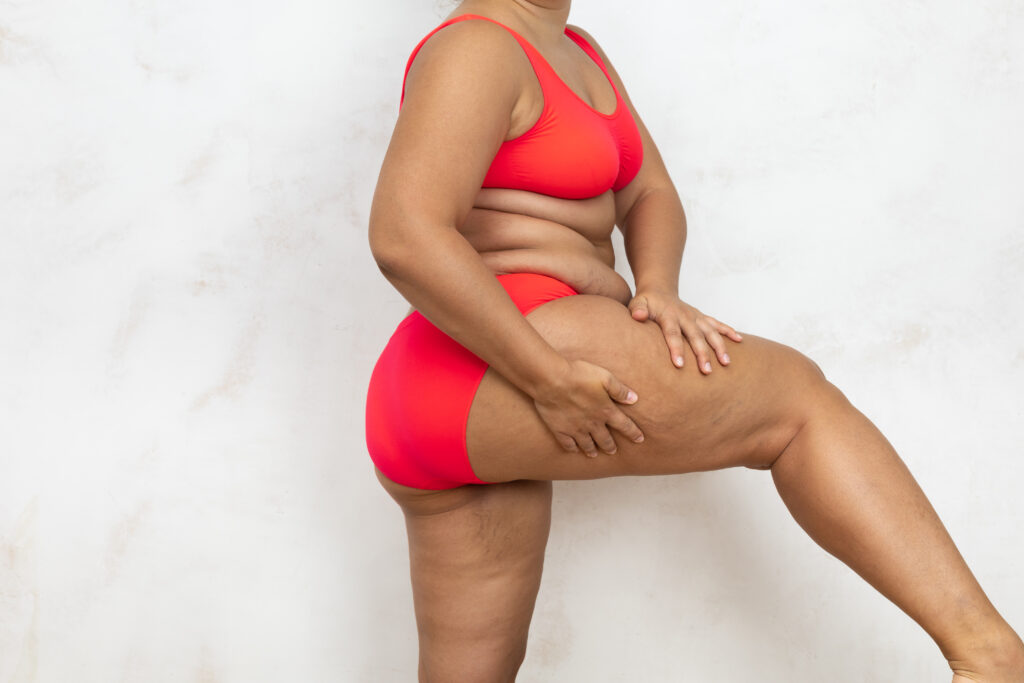Lipoedema is a chronic, often misunderstood condition that affects millions of women worldwide. Despite its prevalence, many women spend years—sometimes decades—misdiagnosed or dismissed, often being told their condition is simply obesity or poor lifestyle choices.
This Women’s History Month, it's time to shine a light on lipoedema, its symptoms, challenges, and the importance of early diagnosis and proper treatment.
What is Lipoedema?
Lipoedema is a chronic fat disorder that causes excessive fat accumulation in the legs, hips, and sometimes arms, creating a disproportionate body shape. Unlike typical weight gain, the fat in lipoedema is painful, easily bruises, and does not respond to diet or exercise.
While the exact cause remains unknown, researchers believe it has a strong genetic and hormonal component, as it primarily affects women, often developing during puberty, pregnancy, or menopause.
Key Characteristics of Lipoedema:





Why Lipoedema is Often Misdiagnosed
One of the biggest struggles women with lipoedema face is misdiagnosis. Many are told they simply need to lose weight, leading to years of frustration and emotional distress. Unlike obesity, lipoedema fat is fibrotic and resistant to weight loss strategies, causing a cycle of guilt, shame, and ineffective treatments.
Some women also get misdiagnosed with lymphoedema, a condition involving fluid retention and swelling, but lipoedema differs because it primarily affects fat tissue rather than the lymphatic system.
Without proper recognition, women with lipoedema continue to suffer in silence.
The Emotional & Physical Toll of Lipoedema
Lipoedema isn’t just a cosmetic issue—it has serious physical and emotional consequences.
Physical Challenges



Mental & Emotional Struggles



The combination of physical discomfort and emotional distress makes lipoedema a serious health issue—one that needs more awareness and research.

Treatment Options for Lipoedema
While there is no permanent cure, there are treatment options that can help manage symptoms and improve quality of life.
1. Conservative Management




2. Surgical Treatment: Liposuction for Lipoedema
For severe cases, water-assisted liposuction (WAL) or tumescent liposuction can remove excess lipoedema fat, improving pain, mobility, and body proportion. Unlike regular cosmetic liposuction, this procedure is medical in nature and requires a specialist.
Lipoedema Myths vs. Facts










FAQs About Lipoedema

Lipoedema itself is not fatal, but if left untreated, it can lead to mobility issues, chronic pain, and secondary conditions like lymphedema.

It is extremely rare in men. The condition is believed to be linked to female hormones, which is why it mostly affects women.

A physical examination by a specialist is the best way to diagnose lipoedema. Imaging tests like ultrasounds or MRIs may be used in some cases.

There is no cure, but proper treatment can help manage symptoms and improve quality of life.

Weight loss may improve overall health, but lipoedema fat does not go away with diet and exercise alone.
Why Awareness Matters: Empowering Women with Knowledge
Despite affecting 1 in 10 women, lipoedema remains one of the most underdiagnosed and misunderstood conditions in women’s health.
Many women suffer in silence, blamed for their body shape and told they just need to exercise more or eat less—when in reality, they have a legitimate medical condition that requires specialized care.
This Women’s History Month, let’s honor not just the women who have made history, but also those fighting invisible battles—like lipoedema.
By raising awareness, we can help millions of women receive the diagnosis, treatment, and support they deserve.

Further Reading & Resources



